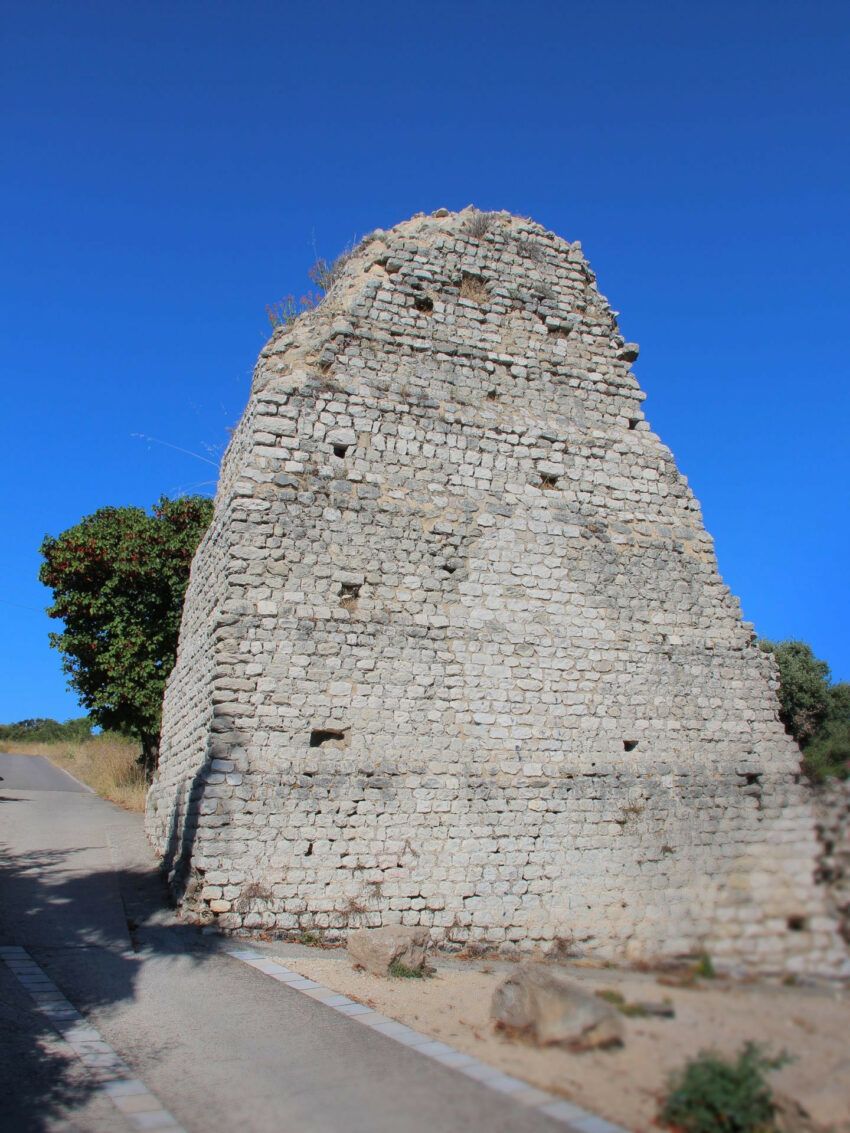The Pyramide dite La Penelle is a lesser-known historical monument located in Normandy, France. It stands as a testament to the region’s rich history and has sparked curiosity among historians and tourists alike. The structure’s origins and purpose remain a subject of debate, with various theories attempting to unravel its mysteries. Despite its enigmatic nature, the pyramid is an intriguing piece of heritage that offers insights into the past civilizations of Normandy.
Get your dose of History via Email
Historical Background of Pyramide dite La Penelle
The Pyramide dite La Penelle, nestled in the French region of Normandy, was discovered in the 19th century. Local lore suggests that it was built by the Romans, but evidence to support this claim is scant. The structure’s true origins are shrouded in mystery, with no definitive records of its construction or purpose. Over the years, it has captivated the imagination of locals and historians alike, serving as a silent witness to the passage of time.
Despite its name, the pyramid is not a tomb but rather a cenotaph, a monument erected in honor of a person or group of people whose remains are elsewhere. It is believed to have been built during the reign of Napoleon Bonaparte, around the early 1800s. The monument’s design is attributed to a local dignitary, who may have been inspired by the return of Napoleon’s campaign in Egypt, where he and his troops encountered the ancient pyramids.
Throughout its history, the Pyramide dite La Penelle has not been the scene of any significant historical events. However, it has become a point of interest for those fascinated by Napoleonic history and the influence of Egyptian culture on European art and architecture. The structure has not been inhabited, but it stands as a historical marker, offering a glimpse into the past cultural exchanges between France and Egypt.
The pyramid’s connection to Napoleon has made it a subject of local pride. It is a unique example of how Egyptian motifs and styles captivated European imagination during the 19th century. This fascination with Egypt, known as Egyptomania, was prevalent across Europe after Napoleon’s campaign, influencing various aspects of art, architecture, and culture.
About Pyramide dite La Penelle
The Pyramide dite La Penelle is a striking structure, standing tall in the Normandy countryside. Its design is reminiscent of the iconic pyramids of Egypt, albeit on a much smaller scale. The pyramid is built from local stone, which has withstood the test of time, preserving the monument’s integrity over the centuries. Its construction methods and materials are typical of the early 19th century, reflecting the building practices of the time.
The pyramid’s base is square, and it tapers to a point, much like the Great Pyramids of Giza. However, it lacks the grandeur and scale of its ancient counterparts. The craftsmanship is evident in the carefully laid stones and the precision of the pyramid’s shape. The monument’s simplicity is its architectural highlight, devoid of elaborate decorations or inscriptions that characterize many Napoleonic monuments.
One of the most intriguing aspects of the Pyramide dite La Penelle is its isolated location. Unlike many historical monuments that are often found within or near populated areas, this pyramid sits alone in the landscape. This solitude adds to its mystique and raises questions about the intent behind its placement and construction.
Despite its modest size, the pyramid is an important piece of architectural heritage. It serves as a physical representation of the cultural and historical influences that shaped Normandy during the Napoleonic era. The structure’s endurance over time also speaks to the quality of its construction and the resilience of the materials used.
Overall, the Pyramide dite La Penelle is a fascinating example of how historical events and cultural trends can manifest in architecture. It may not boast the grandiosity of other monuments from the same period, but it offers a unique window into the past and the enduring human fascination with ancient civilizations.
Theories and Interpretations
The Pyramide dite La Penelle has been the subject of various theories and interpretations over the years. Its purpose and origins remain a puzzle, with no concrete evidence to fully explain its existence. Some suggest that it was built as a tribute to Napoleon’s Egyptian campaign, while others believe it may have served as a landmark or a memorial.
One popular theory posits that the pyramid was constructed to honor soldiers who fought in the Napoleonic Wars. However, the absence of inscriptions or plaques makes this theory difficult to confirm. The pyramid’s design and timing of construction lend some credence to the idea that it was influenced by Egyptomania, a phenomenon that swept through Europe after Napoleon’s campaign.
The mystery of the Pyramide dite La Penelle is compounded by the lack of historical records. This has led to a reliance on local oral traditions and the interpretations of historians to piece together the monument’s story. The pyramid’s true purpose may have been purely aesthetic, serving as a testament to the landowner’s wealth and taste.
Dating the pyramid has also been a challenge. While it is widely accepted that it was built in the early 1800s, precise dating methods, such as carbon dating, have not been applied. This lack of scientific dating has left room for speculation and has made the pyramid a subject of ongoing research.
Ultimately, the Pyramide dite La Penelle remains an enigma. Its silent form continues to intrigue and inspire those who encounter it. Whether it was a memorial, a decorative folly, or a symbol of cultural fascination, the pyramid is a captivating piece of history that invites interpretation and wonder.
At a glance
- Country: France
- Civilization: French, early 19th century
- Age: Approximately 200 years old (early 1800s AD)

